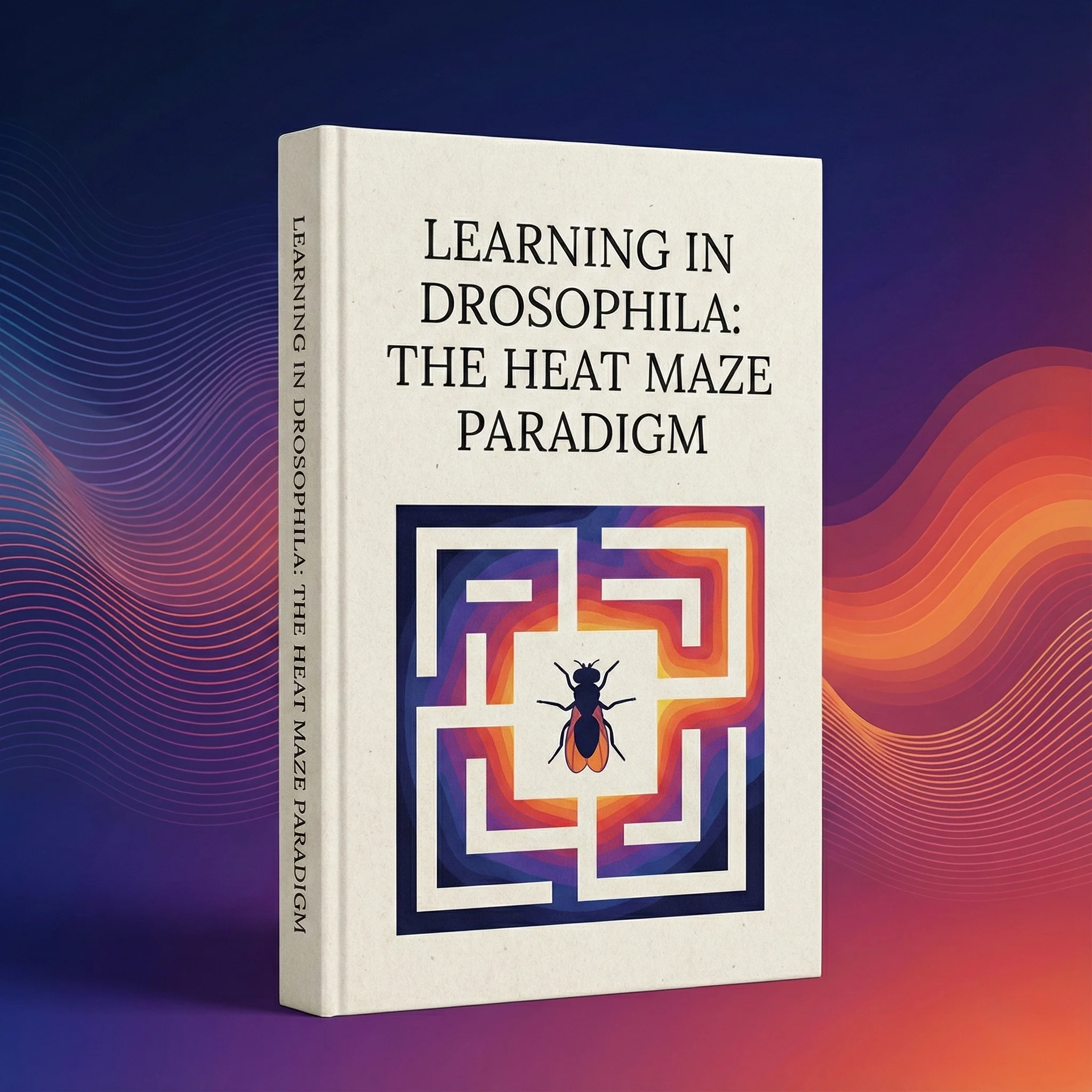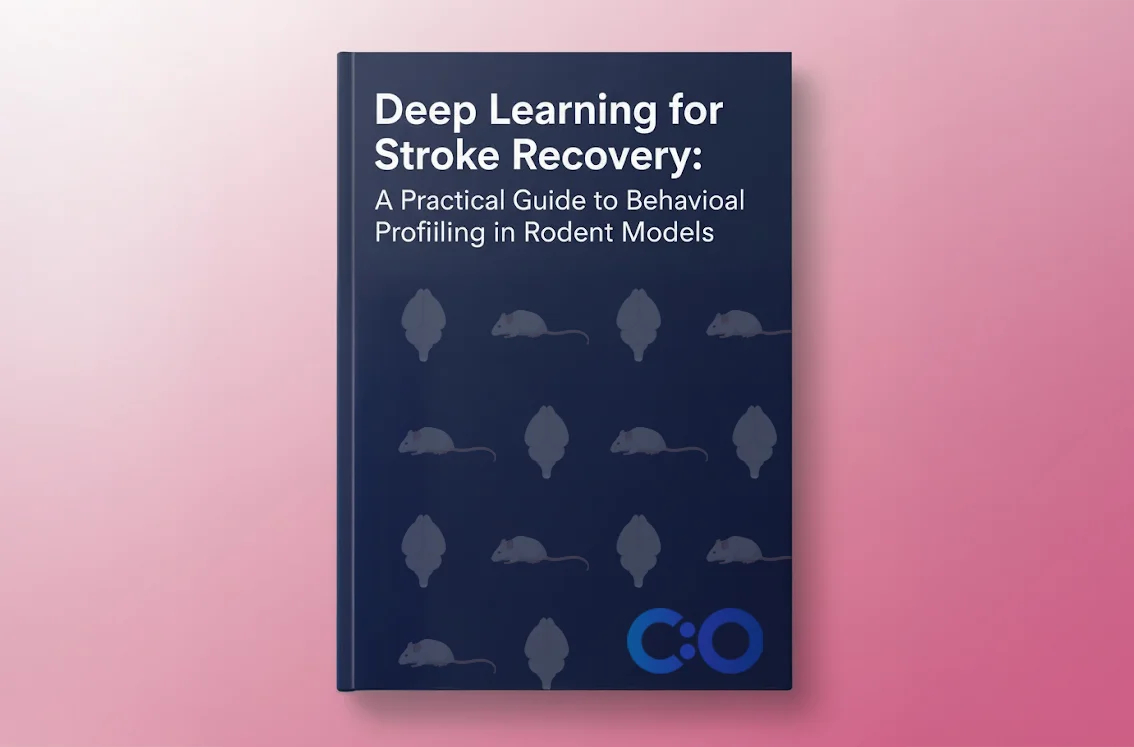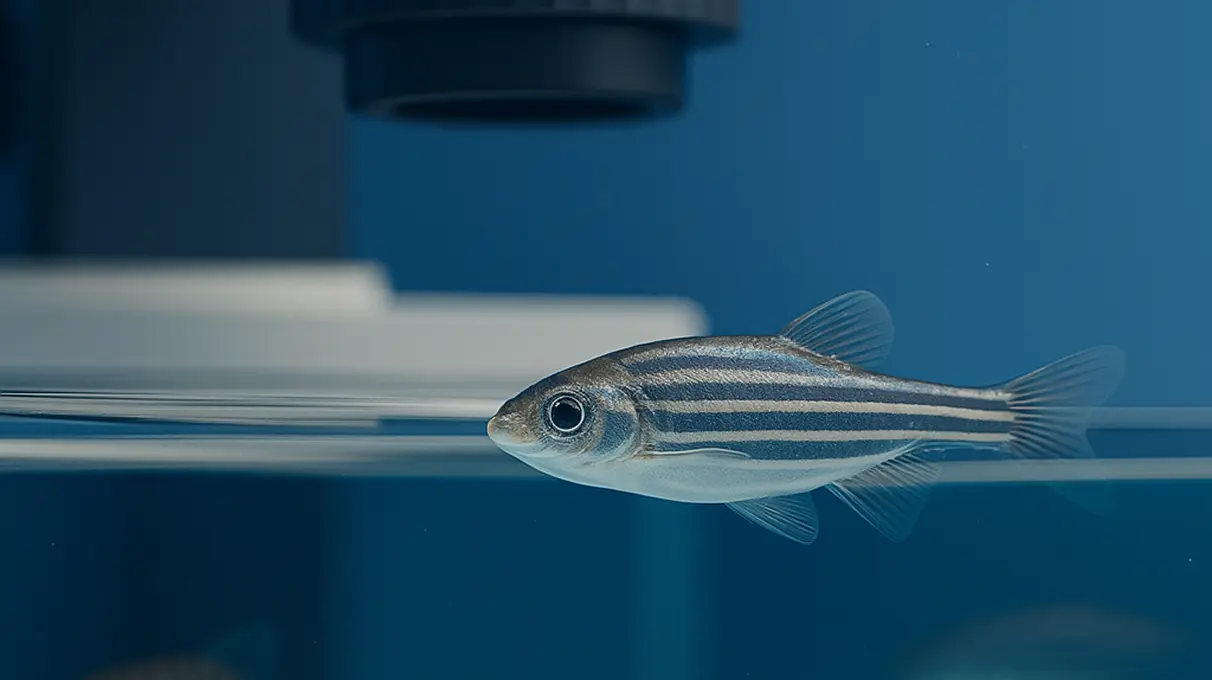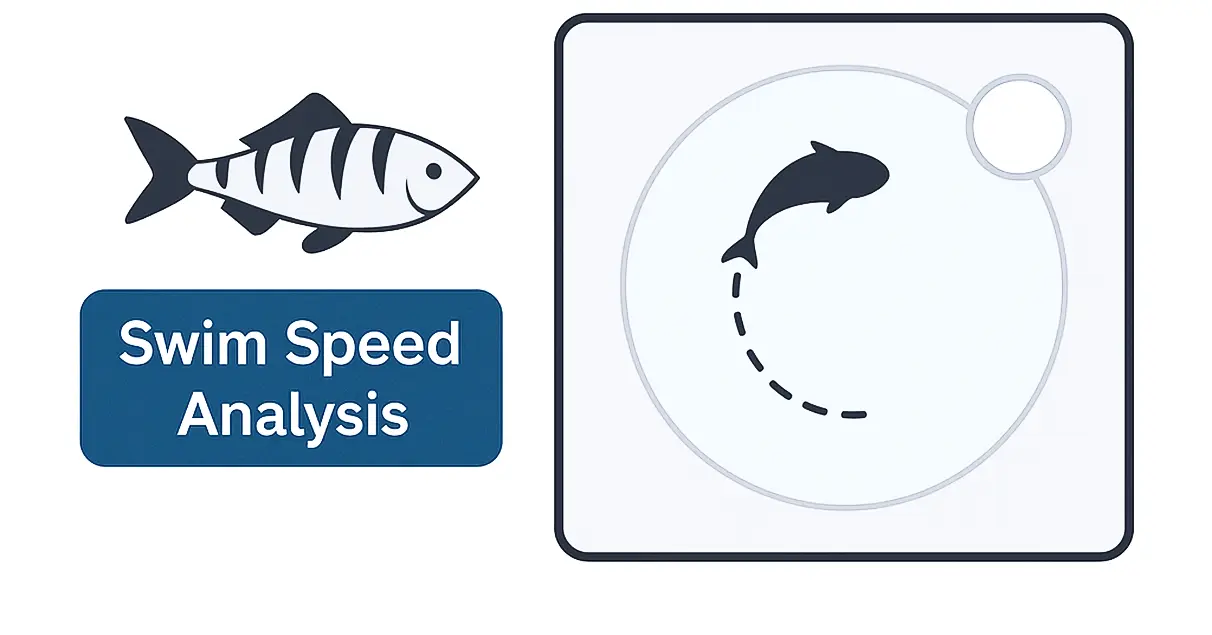

In the often bustling world of behavioral neuroscience, we are naturally drawn to dynamic and overt behaviors—running, grooming, foraging, or socializing. Yet, in the quiet interludes of inactivity, rodents offer some of the most profound insights into their neurological health, emotional states, and environmental adaptations. Resting behavior, though seemingly mundane, is a complex and biologically essential component of the rodent’s behavioral repertoire.
At Conduct Science, where we specialize in precision tools and frameworks for behavioral research, recognizing and decoding this stillness is just as critical as measuring motion.
At Conduct Science, we emphasize that the act of entering the open arms is not random—it reflects a conscious behavioral decision under internal stress. Every step into the exposed arm represents a tension between fear and curiosity, between aversion and exploration. Thus, measuring the frequency of these entries offers quantitative insight into the animal’s risk-taking behavior, emotional state, and response to pharmacological or genetic interventions.
Resting in rodents is defined as a period of behavioral quiescence—characterized by minimal or no locomotor activity, relaxed posture, closed or half-closed eyes, and often, an absence of active grooming or feeding. It may occur during both light and dark cycles, depending on the rodent’s circadian rhythm and the influence of environmental and internal cues.
Importantly, resting should not be conflated with sleep, although the two often overlap in ethologically relevant settings. Sleep is accompanied by distinct EEG signatures and neurophysiological changes, whereas resting may simply be a wakeful pause with reduced sensory engagement.
Though often overlooked in favor of more dynamic behaviors like exploration or feeding, rest is a biologically indispensable activity in the daily repertoire of rodents. Beyond simply “doing nothing,” rest serves as a fundamental physiological state in which the body and brain engage in maintenance, recalibration, and optimization processes that are essential for survival and homeostasis.
At the core of this importance is energy conservation. Rodents, with their high basal metabolic rates and rapid activity cycles, require regular periods of reduced energy expenditure to maintain balance. During rest, muscle activity decreases, metabolic demands are lowered, and internal resources are redistributed to support processes like digestion, tissue repair, and immune function. It is in these quiet moments that the organism recovers from exertion, restoring biochemical equilibrium that would otherwise be compromised by constant motion.
Resting also plays a central role in thermoregulation. Rodents often adopt specific postures during rest—curling up, huddling in groups, or retreating into nesting material—to minimize surface area and conserve body heat. In cooler environments, extended rest episodes may reflect an adaptive strategy to reduce thermal loss and maintain a stable core temperature without expending energy on shivering or active movement. Conversely, in overheated conditions, rodents may stretch out or shift their position to facilitate passive cooling while remaining at rest.
From a neurophysiological perspective, rest is strongly linked to synaptic homeostasis. According to the Synaptic Homeostasis Hypothesis (Tononi & Cirelli, 2006), periods of rest allow the brain to downscale synaptic activity that accumulates during wakefulness. This process prevents neural saturation, reduces energy costs associated with constant synaptic firing, and improves signal-to-noise ratios across neural circuits. In rodents, this mechanism ensures optimal learning and memory formation, particularly after periods of intense exploration or training in maze tasks—experiments often facilitated by Conduct Science’s spatial cognition tools.
Furthermore, rest provides a baseline state against which active behaviors can be compared. In behavioral neuroscience, it’s crucial to distinguish between pathologically reduced activity and voluntary rest. For example, decreased motion in an open field test could be interpreted as sedation, fatigue, or anxiety unless clear patterns of voluntary resting behavior are observed. Recognizing normal rest behavior allows researchers to more accurately interpret deviations caused by pharmacological agents, stress models, or genetic manipulations.
Importantly, resting is not equivalent to sleep, though the two may co-occur or transition fluidly into one another. Unlike sleep, which features defined electroencephalographic (EEG) patterns such as slow-wave activity and REM phases, rest in rodents may be a conscious, alert pause. Yet even in these seemingly idle moments, the brain is far from inactive. Rodents display replay events in the hippocampus during periods of quiet wakefulness—brief episodes of neural activity that echo recent spatial navigation or decision-making sequences. These “offline” reactivations during rest contribute to memory consolidation, problem-solving, and adaptive behavior (Jadhav et al., 2012).
In disease models, disruptions in resting behavior have emerged as early behavioral biomarkers for neurological conditions. For instance, in transgenic models of Alzheimer’s disease, rest patterns become irregular well before cognitive deficits are detectable in maze performance. Similarly, rodent models of Parkinson’s disease may exhibit shorter or fragmented rest bouts long before tremors or bradykinesia appear. This makes rest behavior a valuable, non-invasive readout for early diagnosis and intervention research.
Finally, rest has been shown to impact emotional regulation. In models of chronic stress, rodents often exhibit either hyper-resting (akin to psychomotor retardation in depression) or fragmented, light-sensitive rest, indicative of heightened anxiety. These behavioral signatures are critical for evaluating the efficacy of antidepressant and anxiolytic compounds, which are often tested by measuring their ability to restore normal rest cycles.
Taken together, the physiological importance of rest in rodents cannot be overstated. It supports cellular repair, cognitive function, emotional stability, and homeostatic equilibrium. By integrating high-resolution behavioral tracking and machine-learning-based classification, researchers can now measure resting behavior with unprecedented accuracy—allowing Conduct Science to continue advancing the frontier of behavioral neuroscience.
in the realm of behavioral neuroscience, one of the most subtle yet powerful indicators of an animal’s emotional and cognitive well-being is its resting behavior. While often overshadowed by more dynamic or observable behaviors—like grooming, exploration, or aggression—rest is an ethologically meaningful and deeply integrative behavioral state. In rodents, changes in the quantity, quality, and context of resting behavior provide a non-invasive and highly sensitive window into underlying mental health conditions, such as anxiety, depression, chronic stress, and trauma-related disorders.
Under normal, unstressed conditions, resting in rodents follows predictable circadian patterns and is characterized by specific postures—such as lateral recumbency or curled body positioning—often within preferred, safe areas of the cage. These rest episodes tend to be consolidated, occurring mostly during the light phase in nocturnal species like rats and mice. However, when mental health is compromised, these natural patterns begin to shift in consistent and measurable ways.
One of the most studied disruptions of rest occurs in models of anxiety. Rodents exposed to acute or chronic stressors—such as predator scent exposure, restraint stress, or repeated social defeat—often display fragmented and hypervigilant resting behavior. They may engage in shorter, more frequent bouts of rest, and frequently startle into alertness, suggesting a physiological state of heightened arousal. Instead of adopting relaxed postures in protected spaces, anxious rodents may rest in more exposed locations, with partially upright or tense postures that suggest an inability to disengage from environmental monitoring. These patterns closely resemble sleep disturbances and restlessness reported in humans with anxiety disorders and post-traumatic stress.
In contrast, models of depression frequently reveal a different resting phenotype: excessive rest or hypoactivity combined with flattened, withdrawn posture. Rodents subjected to chronic mild stress (CMS)—a validated model of depression—may spend prolonged periods inactive in corners or unprotected areas of the cage. This increased resting is not restorative; rather, it is often associated with behavioral despair, low reactivity to stimuli, and decreased interest in environmental enrichment. These states mimic key features of anhedonia and psychomotor retardation in clinical depression (Willner, 2005).
It is worth noting that not all increases in resting are pathological. In healthy animals, increased rest following intense cognitive tasks (e.g., maze learning) or social interaction may represent adaptive recovery. What differentiates pathological rest is its context, posture, and integration with other behavioral domains. For example, when increased rest is accompanied by reduced grooming, weight loss, or social withdrawal, it likely reflects a depressive-like state rather than a homeostatic adjustment.
Moreover, sex differences have been observed in how rodents express rest-related changes under stress. Female rodents, for example, may maintain more normal rest patterns while showing increased anxiety behaviors in exploration tasks. These differences highlight the importance of incorporating sex as a biological variable in behavioral phenotyping and underscore the complexity of interpreting resting behavior in relation to mental health.
In research settings, the value of resting as a mental health indicator is amplified when combined with automated behavioral tracking. Using high-resolution video analysis, researchers can now measure parameters such as latency to rest, duration of rest episodes, frequency of position changes during rest, and proximity to cage walls or nest areas. These quantitative metrics provide objective endpoints that are far more sensitive than traditional scoring of open field or elevated plus maze tests.
Furthermore, resting behavior is highly responsive to pharmacological interventions, making it a useful tool for screening the efficacy of antidepressants, anxiolytics, and neuroprotective compounds. Rodents treated with SSRIs, for instance, often exhibit more consolidated and less fragmented resting behavior after chronic administration. This behavioral normalization is thought to reflect both neurochemical changes and improved affective states.
What makes resting especially powerful as a behavioral window into mental health is its multimodal integration. It reflects cognitive load, emotional tone, environmental familiarity, and physiological state—all in one seemingly passive behavior. In the clinical realm, sleep disturbances and fatigue are some of the most commonly reported symptoms across mood and anxiety disorders. Observing these analogs in rodents provides a translational bridge between preclinical models and human psychopathology.
The environment significantly shapes how, when, and where rodents rest. Enrichment versus deprivation leads to vastly different resting profiles:
These differences highlight the role of environmental context in shaping what would otherwise appear to be a biologically “passive” behavior.
Resting behavior in rodents is not random—it is governed by one of biology’s most fundamental timekeeping systems: the circadian rhythm. This internal clock synchronizes physiological and behavioral activities to the 24-hour light-dark cycle, ensuring that organisms align their functions—such as feeding, locomotion, hormone release, and rest—with the external environment. In rodents, this rhythm profoundly shapes when, how often, and how deeply they rest, offering researchers a precise lens through which to assess neurological and systemic health.
At the center of this regulation is the suprachiasmatic nucleus (SCN) of the hypothalamus. Acting as the master circadian pacemaker, the SCN receives direct input from the retina, allowing it to adjust internal rhythms based on environmental light cues. In nocturnal animals like rats and mice, this means consolidating active behaviors—such as foraging, grooming, and exploration—during the dark phase, and resting primarily during the light phase.
This temporal structure isn’t just a behavioral habit—it reflects deeply rooted genetic and molecular programming. Core circadian genes such as Clock, Bmal1, Per, and Cry oscillate rhythmically in the SCN and peripheral tissues, regulating downstream pathways that influence sleep-wake behavior, metabolism, and immune function. These genes are also expressed in brain regions involved in motivation, emotion, and cognition, linking the circadian system with broader behavioral domains, including rest.
In a healthy rodent, rest during the light cycle is characterized by predictable patterns of postural stillness, lowered responsiveness to external stimuli, and clustering in safe or preferred areas of the cage. Disruptions to these rest patterns—whether due to genetic mutation, environmental manipulation, or disease—can serve as early indicators of circadian dysregulation. For instance, mice with mutations in Clock or Bmal1 genes exhibit arrhythmic activity patterns, fragmented rest, and impaired cognitive performance. These phenotypes closely resemble symptoms seen in human circadian rhythm disorders such as insomnia, delayed sleep phase syndrome, and even mood disorders like seasonal affective disorder.
Moreover, manipulating the light-dark cycle in controlled laboratory settings can entrain, disrupt, or shift the circadian rhythm. Researchers often use protocols like constant light exposure, jet lag paradigms, or shifted photoperiods to study how environmental time cues affect rest. For example, rodents exposed to continuous light often experience rest fragmentation, increased daytime activity, and impaired memory consolidation. These models are especially relevant for studying human disorders associated with circadian misalignment, such as those caused by night shift work, frequent travel, or urban light pollution.
Importantly, the impact of circadian rhythm disruption on rest is bidirectional. While light-cycle changes affect resting behavior, disruptions in resting patterns can also signal dysfunction within the circadian system itself. In neurodegenerative disease models—such as Alzheimer’s, Parkinson’s, or Huntington’s disease—rodents often exhibit early rest/wake disturbances before other clinical signs emerge. These include increased daytime wakefulness, shortened resting bouts, and abnormal phase-shifting, which are quantifiable through high-resolution tracking systems. These alterations can be used as biomarkers of preclinical neurodegeneration, guiding both diagnosis and therapeutic development.
Furthermore, circadian regulation of rest is linked to immune function and metabolic homeostasis. Studies have shown that rodents with disrupted rest rhythms due to circadian misalignment exhibit elevated levels of inflammatory cytokines, insulin resistance, and weight gain. These findings align with human epidemiological data showing that poor sleep hygiene and irregular circadian schedules are associated with higher risks of obesity, diabetes, and cardiovascular disease.
In sum, resting behavior in rodents is not merely a reflection of fatigue—it is a tightly regulated, clock-driven process that intersects with every major physiological system. Understanding its timing, quality, and adaptability reveals the internal coherence of the organism and can help detect the earliest signs of dysfunction, well before more overt symptoms emerge.
Rest is not merely an individual behavior—it also reflects social structure. In group-housed rodents, dominance hierarchies can affect resting location, frequency, and quality:
Resting can thus act as a social barometer, revealing more than just an animal’s fatigue—it unveils patterns of submission, territoriality, and social stress.
Despite their outward inactivity, resting rodents often exhibit intense neural activity, particularly in the hippocampus. One of the most critical features observed during rest is the presence of sharp wave-ripples (SWRs)—short bursts of synchronized activity that are involved in memory consolidation.
SWRs occur during quiet rest or slow-wave sleep and represent the reactivation of previously encoded experiences, such as navigating a maze. This neural “replay” is critical for reinforcing learning and planning future actions (Jadhav et al., 2012). Without rest, these neural processes are diminished, leading to impaired memory performance.
This makes rest not only a recovery period but also a phase of cognitive processing, during which the brain actively organizes and stores information.
In recent years, resting behavior in rodents has emerged as more than a simple sign of energy conservation—it has become a reliable, sensitive biomarker in the study of neurological and systemic diseases. While overt behavioral symptoms such as motor deficits, cognitive decline, or compulsive behaviors are often used to assess pathology, these changes typically appear after disease progression is well underway. Rest, on the other hand, is one of the earliest behavioral domains to shift in response to internal physiological imbalances, making it a valuable tool for early detection, disease modeling, and therapeutic evaluation.
Rest is a globally regulated behavior—integrated by neural circuits, modulated by hormones, and shaped by circadian rhythms. This makes it exceptionally vulnerable to disruption across multiple systems. In neurodegenerative models such as Alzheimer’s disease (AD), Parkinson’s disease (PD), and Huntington’s disease (HD), altered resting patterns often appear before classic symptoms like memory loss or tremor.
In transgenic Alzheimer’s models, for example, mice and rats begin to display fragmented rest episodes, disrupted circadian rest-activity cycles, and increased sleep latency well before significant amyloid plaque deposition. These changes mirror rest and sleep disturbances reported in human AD patients, where circadian instability and poor sleep consolidation are among the first clinical complaints. Monitoring rest in these models not only helps researchers understand disease trajectory but can serve as a non-invasive, behavioral correlate of neurodegenerative burden.
Similarly, in Parkinson’s disease models, rodents with dopaminergic neuron loss in the substantia nigra exhibit reduced resting time, increased wakefulness during the light phase, and abnormal transitions between rest and activity. These disturbances precede motor rigidity and bradykinesia, mimicking early non-motor symptoms seen in PD patients, such as REM behavior disorder and insomnia. Rest metrics in these models provide an early behavioral window into dopaminergic system dysfunction—a critical target in PD research and treatment.
Even in psychiatric disease models, resting behavior reveals underlying pathology. In rodent models of major depressive disorder, such as the chronic mild stress (CMS) paradigm, animals exhibit prolonged periods of rest accompanied by flattened posture and reduced reactivity. This behavior reflects psychomotor retardation and anhedonia—core symptoms of depression in humans. Conversely, in anxiety models, rest is fragmented and hypervigilant, reflecting elevated arousal and threat sensitivity. In both cases, rest is disrupted, but in distinctly patterned ways that align with specific psychiatric phenotypes.
Historically, rest was assessed via observation—relying on subjective interpretations and coarse time estimates. However, advances in automated behavioral tracking and machine learning-based classifiers have transformed rest into a quantifiable and analyzable parameter.
With the use of home-cage monitoring systems, infrared beam breaks, and video-based motion detection, researchers can now measure:
These metrics are invaluable not only for behavioral phenotyping but also for longitudinal disease tracking. For example, an increase in rest fragmentation over weeks may indicate worsening pathology in a neurodegenerative model. Conversely, normalization of rest behavior after drug treatment may suggest therapeutic efficacy.
In preclinical drug development, resting behavior serves as a behavioral readout of pharmacological effect. This is particularly useful in testing:
Importantly, rest is non-invasive and ethically low-impact, making it suitable for repeated measurements across long-term studies. This allows researchers to track changes without introducing confounding stressors, as often happens with forced swim or maze-based tests.
Resting behavior also reflects non-neurological pathologies. In rodent models of metabolic syndrome and obesity, increased sedentary time and altered rest-activity balance often precede visible weight gain. In models of systemic inflammation, rest disruption is linked to cytokine activity and sickness behavior.
Because rest is coordinated by multiple systems—the brain, endocrine system, immune system, and circadian clock—its disruption provides a whole-organism indicator of systemic dysregulation. As such, resting can serve as a bridge between neuroscience and immunology, endocrinology, and chronobiology.
Resting behavior in rodents, long considered trivial, is now recognized as a critical neurobehavioral indicator. It encapsulates emotional well-being, social dynamics, neurological function, and environmental response. In the realm of scientific observation, it serves not as background noise but as a foreground of insight.
At Conduct Science, we believe in measuring more than movement—we strive to capture the silences that speak volumes. Through integrated systems for behavioral monitoring, maze analytics, and home-cage observation, we empower researchers to study the hidden rhythms of rest with scientific precision and ethical care.
As it turns out, the moments when a rodent pauses—when it curls up in a corner or lies motionless in its nest—are some of the most revealing moments of all.
Jadhav, S. P., et al. (2012). Awake hippocampal sharp-wave ripples support spatial memory. Science, 336(6087), 1454–1458. https://doi.org/10.1126/science.1217230
Written by researchers, for researchers — powered by Conduct Science.










